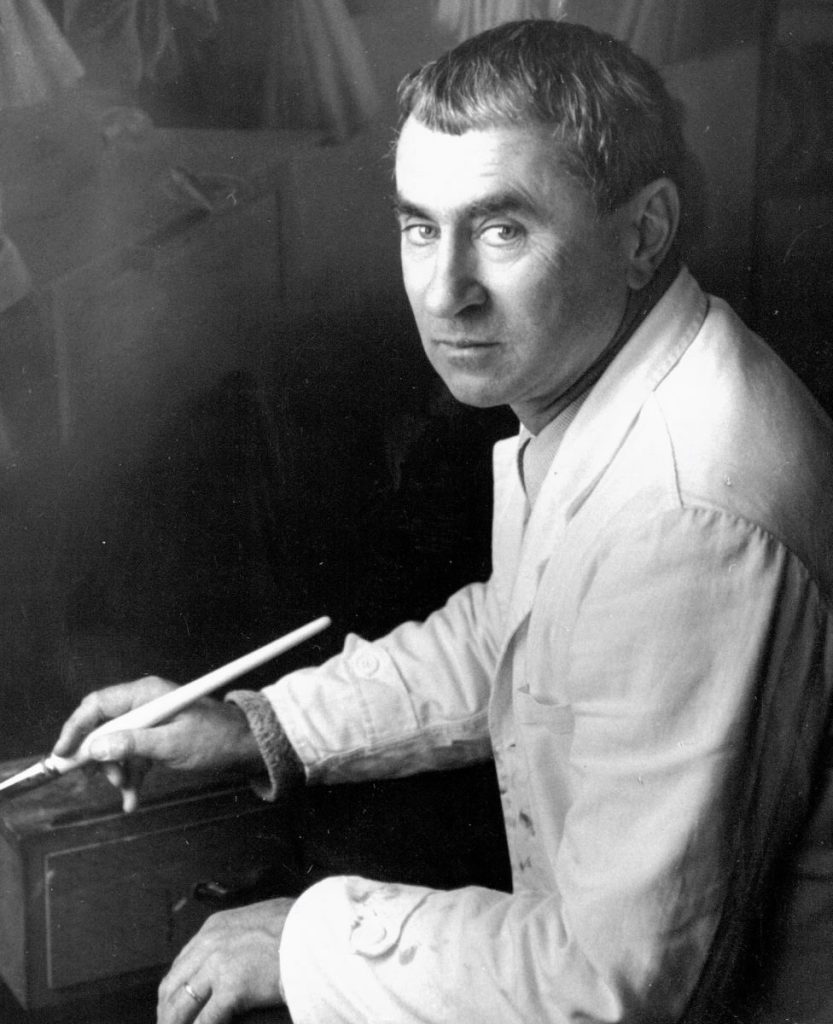
Willy Fries’ wordless novel, gottlose, depicts the path from peaceful rural life into the godless factory world of the big city with its social misery and sin.
Painter and author, Willy Fries, born in 1907 and raised in Wattwil in Toggenburg, in the canton of St. Gallen in Switzerland; died 1980 in Wattwil. Not to be confused with another Swiss painter of the same name living from 1881 to 1965.
From a March 3, 2017 newspaper article about a Fries exhibit – “… he is particularly known for depictions of biblical scenes in a sometimes controversial context ….”
gottlose
NOTE: David in a note at the beginning of his book, Wordless Books: The Original Graphic Novels, 2008. by Beronä, David A.; Kuper, Peter, made a reference to “anomalies”. He cited gottlose as an anomaly and did not include it in his list of wordless books. Given that it was published in 1929, was wordless, told a story in images, and the story had a social realism theme, I do not view it as an anomaly and have included it here.
The German word, “gottlose”, can be translated to English as “Godless Ones”.
This is Fries first art book, from his early expressionist phase in Berlin. It portrays the stark oppression of women in an industrial culture.
“A series of 26 woodcuts representing the path of a human destiny from peaceful rural life into the godless factory world of the big city with all social misery and sin” (from a publisher’s announcement).
Expressive woodcuts about the “confusing life between the power of money and the powerlessness of the weak.” Fries goes on to say: “I was particularly puzzled that the simple observers I wanted to address did not understand my expressive way of speaking and so did not come to grips with the intentions and insights of the series.” This woodcut sequence about the big city experiences has fallen pretty much under the table.
from Willy Fries, A Workshop Book, Rascher 1949, pp. 7 ff.
Four versions were published (while the two numbered editions are undated, the Fries Foundation advises the numbered editions were published in 1929)
gottlose 1929 #1 to 30 on japan paper
- Title: gottlose (note this was published with lower case “g”).
- Author and Illustrator: Willy Fries
- Introduction: after the title page there is a biblical quote, Wisdom of Solomon: Chapter 5, v 6
- Date of publication: undated but the Fries website gives a date of 1929
- Publisher: Verlag Eugen Rentsch
- Place of publication: Erlenbach-Zürich, Leipzig, München,
- Printer: ?
- Copyright: artist?
- Dimensions:
- Book: 30.7 cm H x 23.6cm W x 1.5 cm thick
- slipcase: Yes, thin card slipcase appears to have a print to look like silk with a slight moiré pattern.
- Dust jacket: Yes; dj is ivory (could be just aging) with no printing on it
- Binding: hard cover
- Cover: ivory paper boards with title (all lower case) printed in black on spine and on the front cover
- End papers: are splotches of multi-colours – could be hand-done colouring similar to marbling.
- Language: German titles, etc
- Unpaginated
- Printed: recto
- Edition: No. 1 to 30 on Japan paper
- signed and numbered in pencil by the author on the colophon page at the back
- frontis (self-portrait) pencil signed
- 1st five images are also pencil signed.
- Printed from the original woodcuts
- Description: top edge cut and gilt
- fore and bottom edges uncut
- comes with an attached, thin orange/red striped ribbon for a bookmark
- 26 woodcuts in total:
- frontispiece – (self-portrait) is pencil signed
- After this there is a poem followed by the remaining 25 woodcuts, the first five woodcuts in the story are pencil signed, the next four are also pencil signed.
- Colophon and limitation is numbered and signed by Fries in pencil.
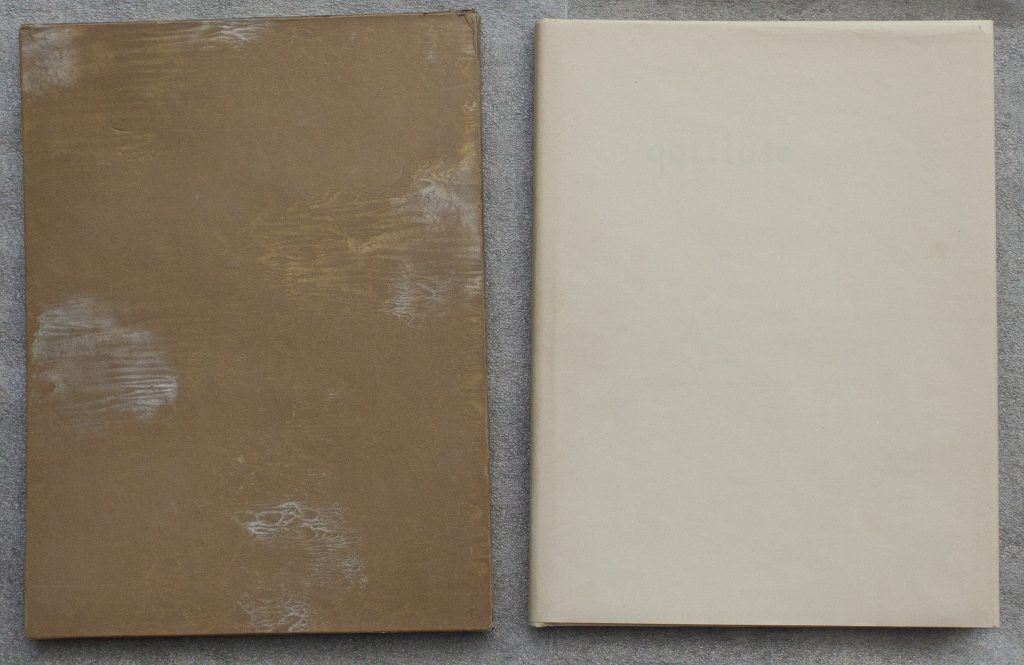
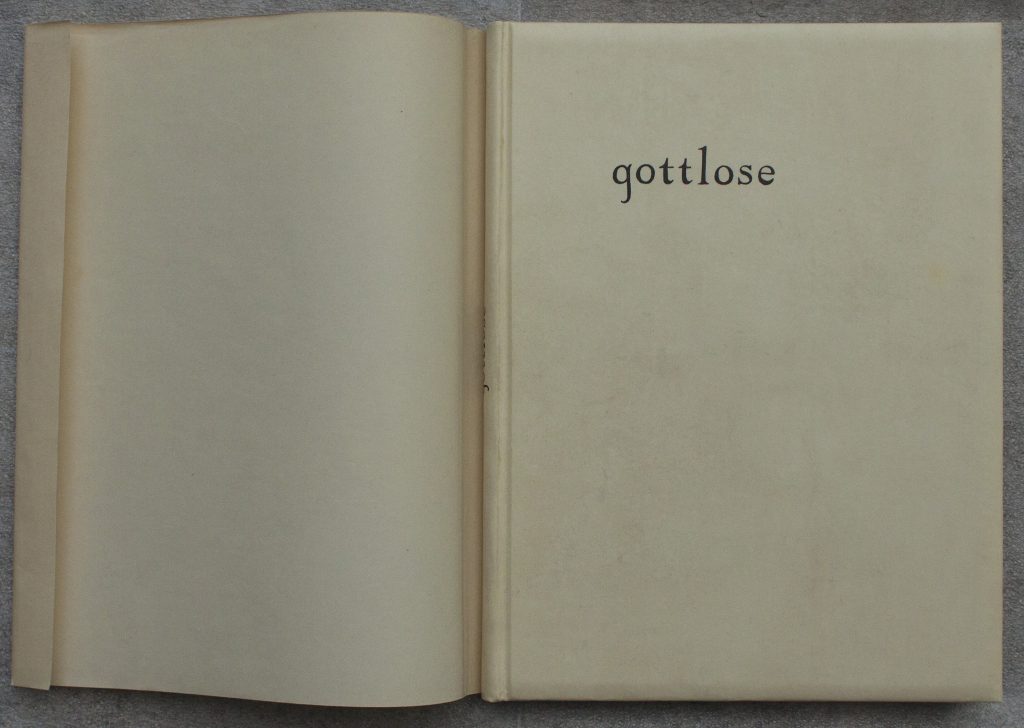
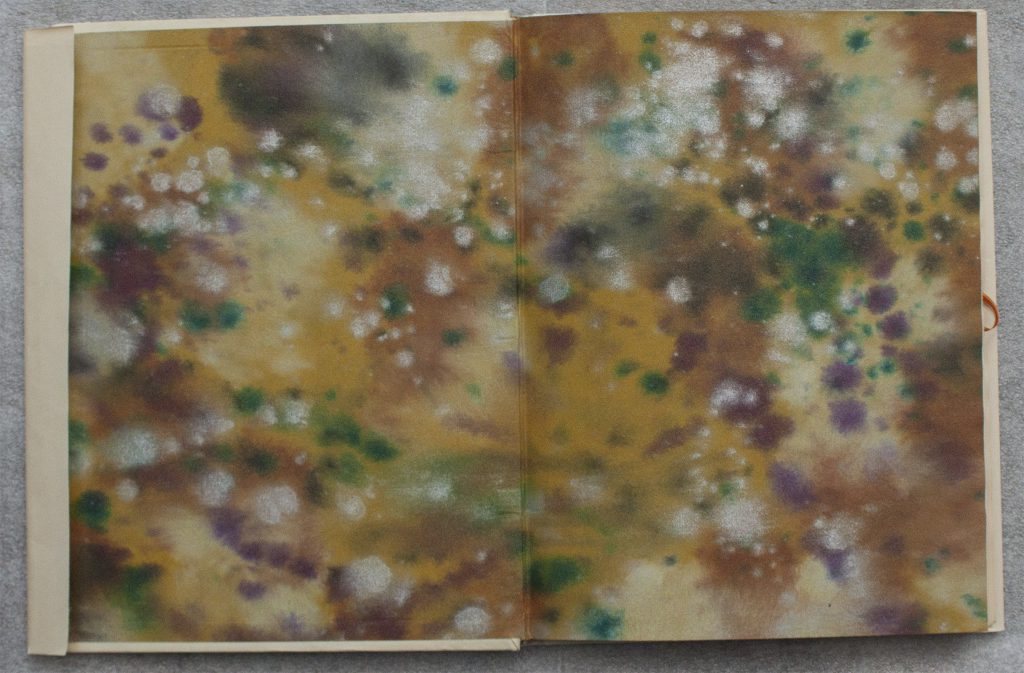
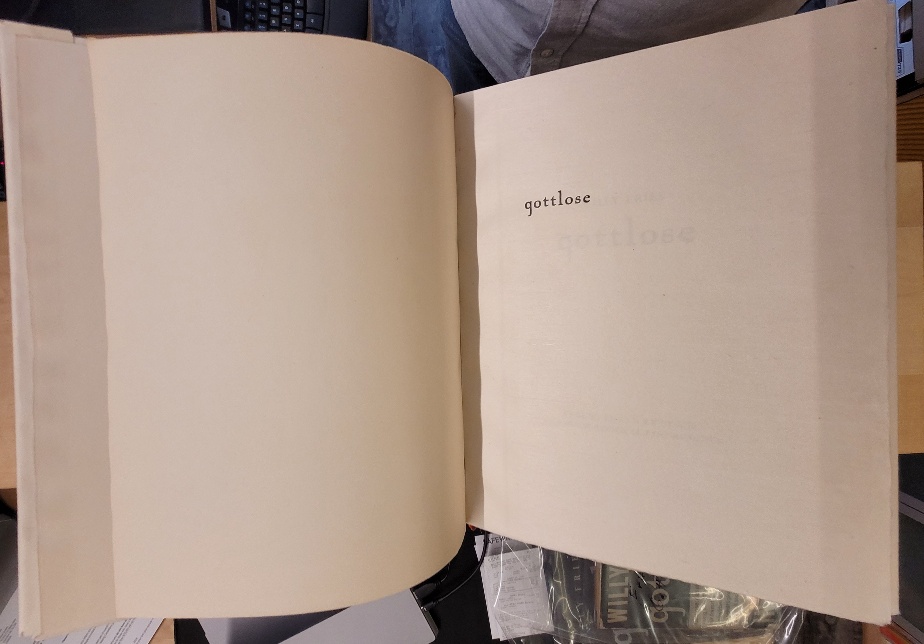
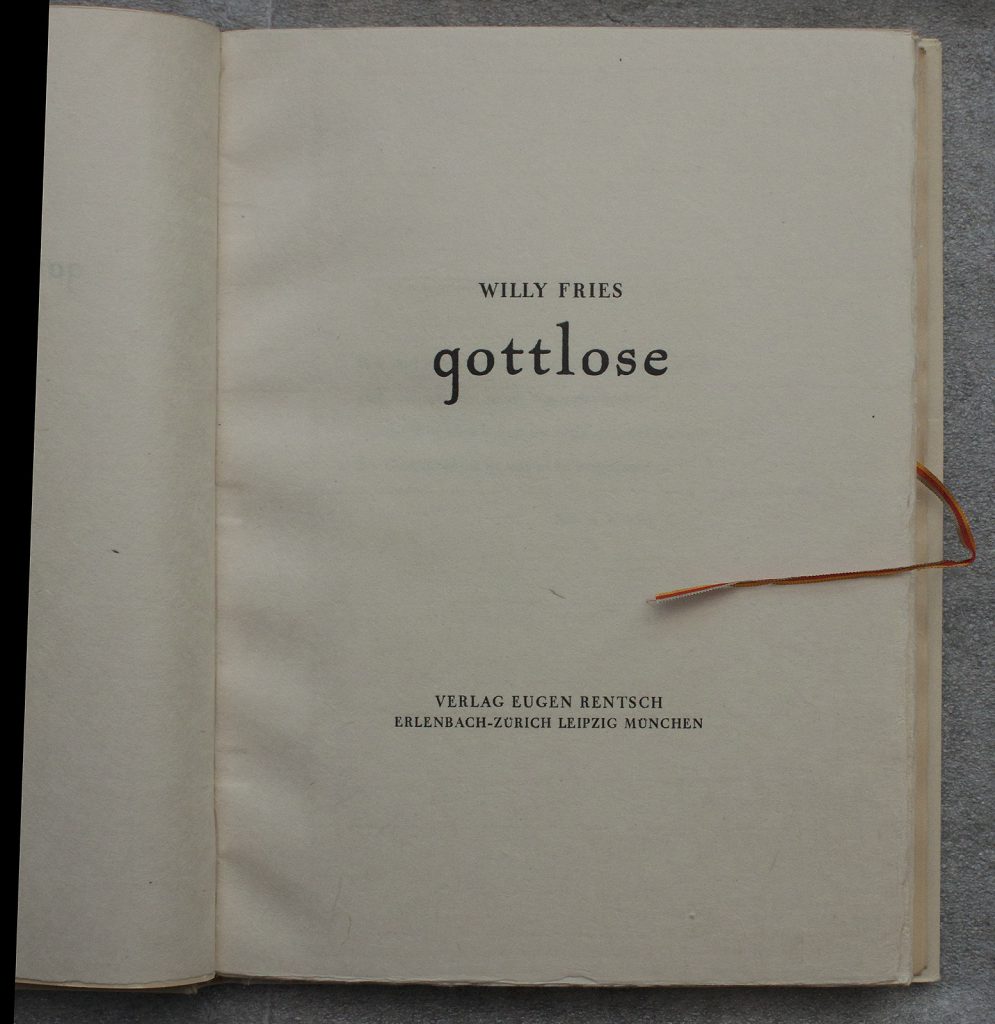
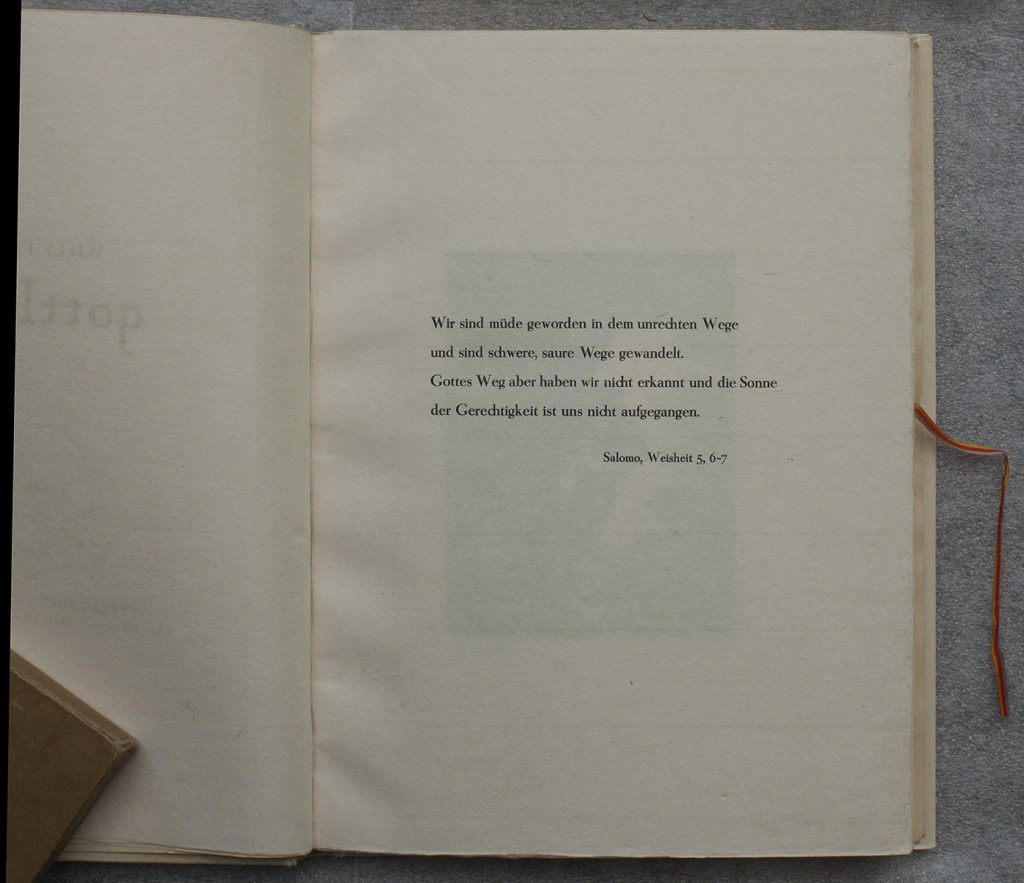
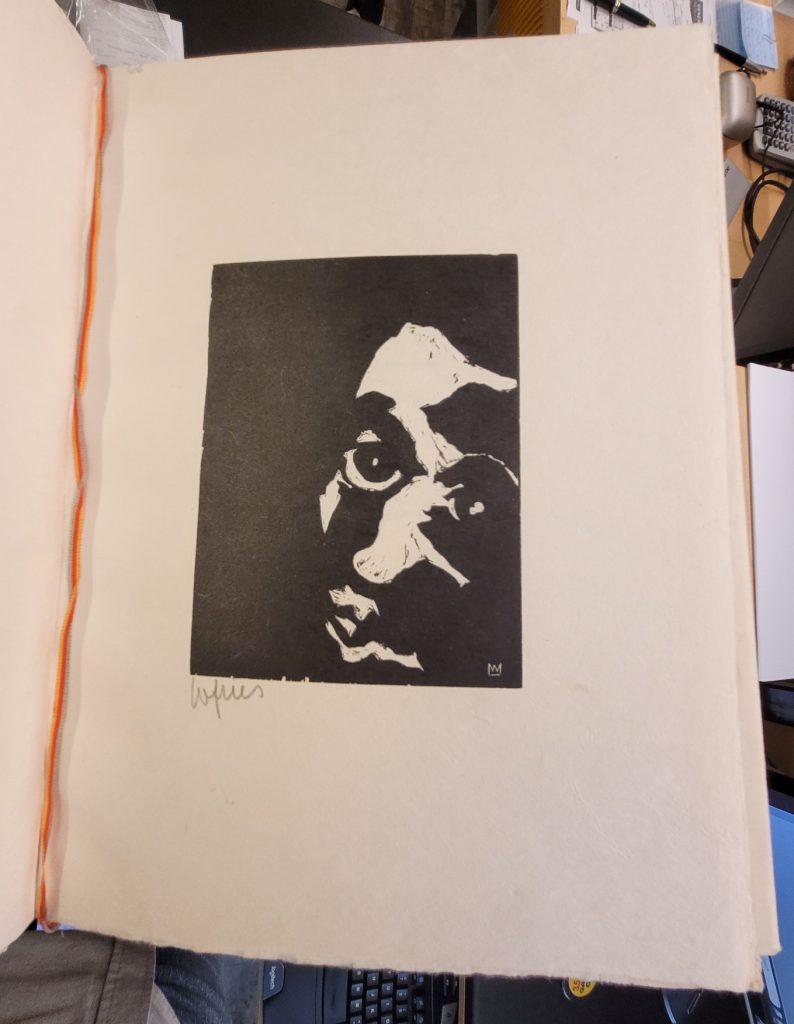
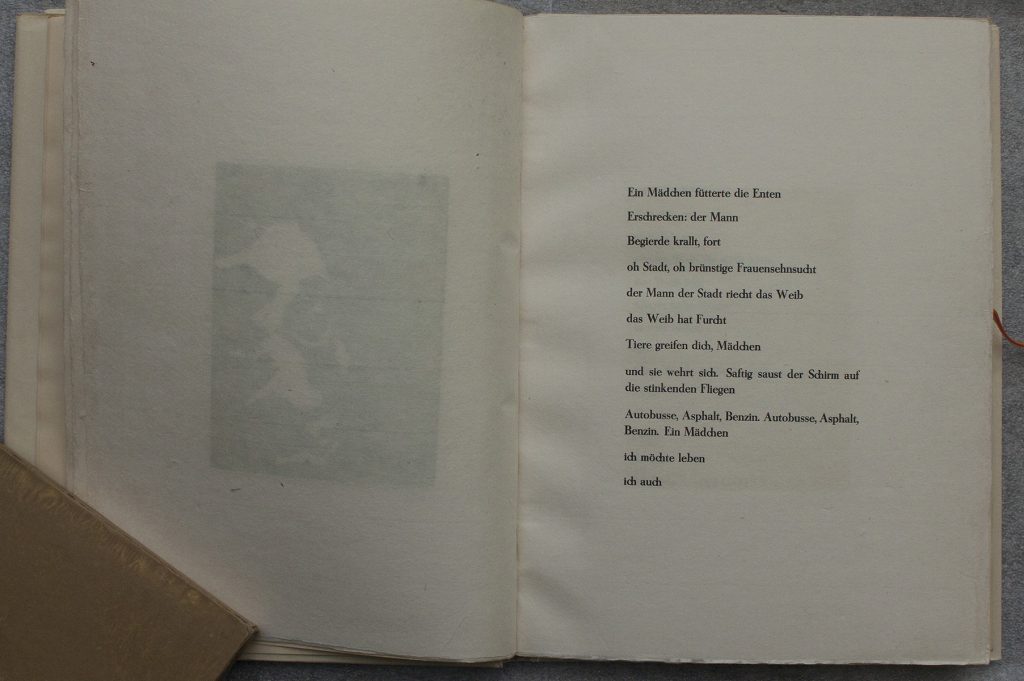
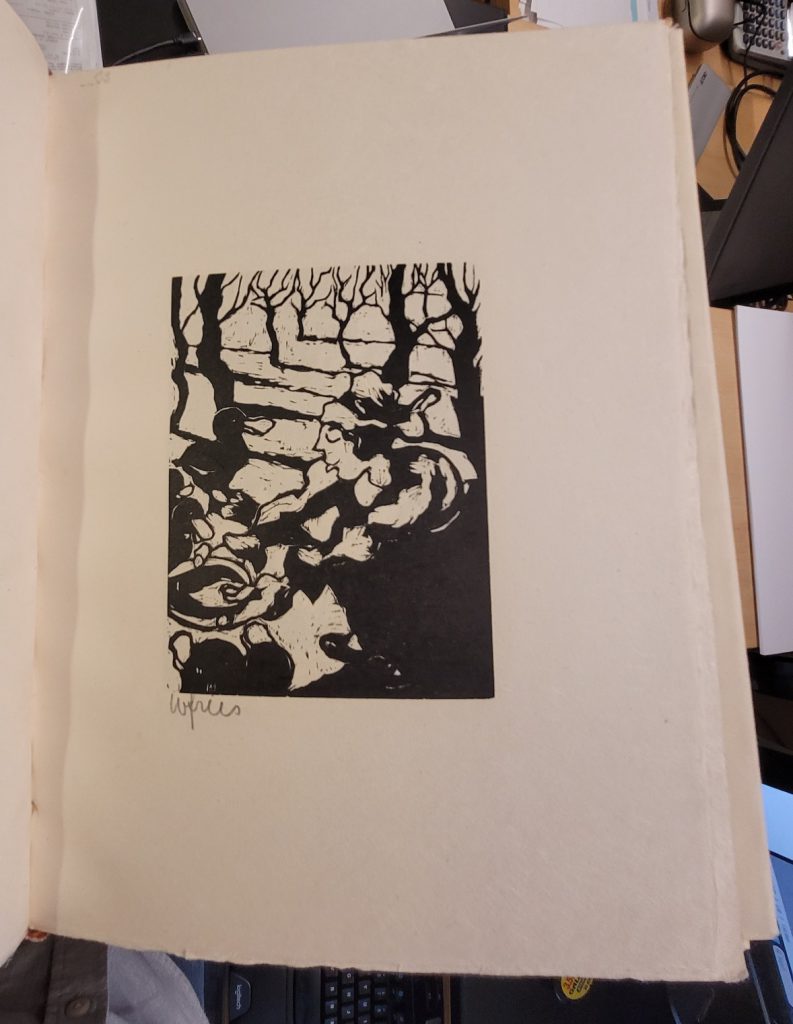
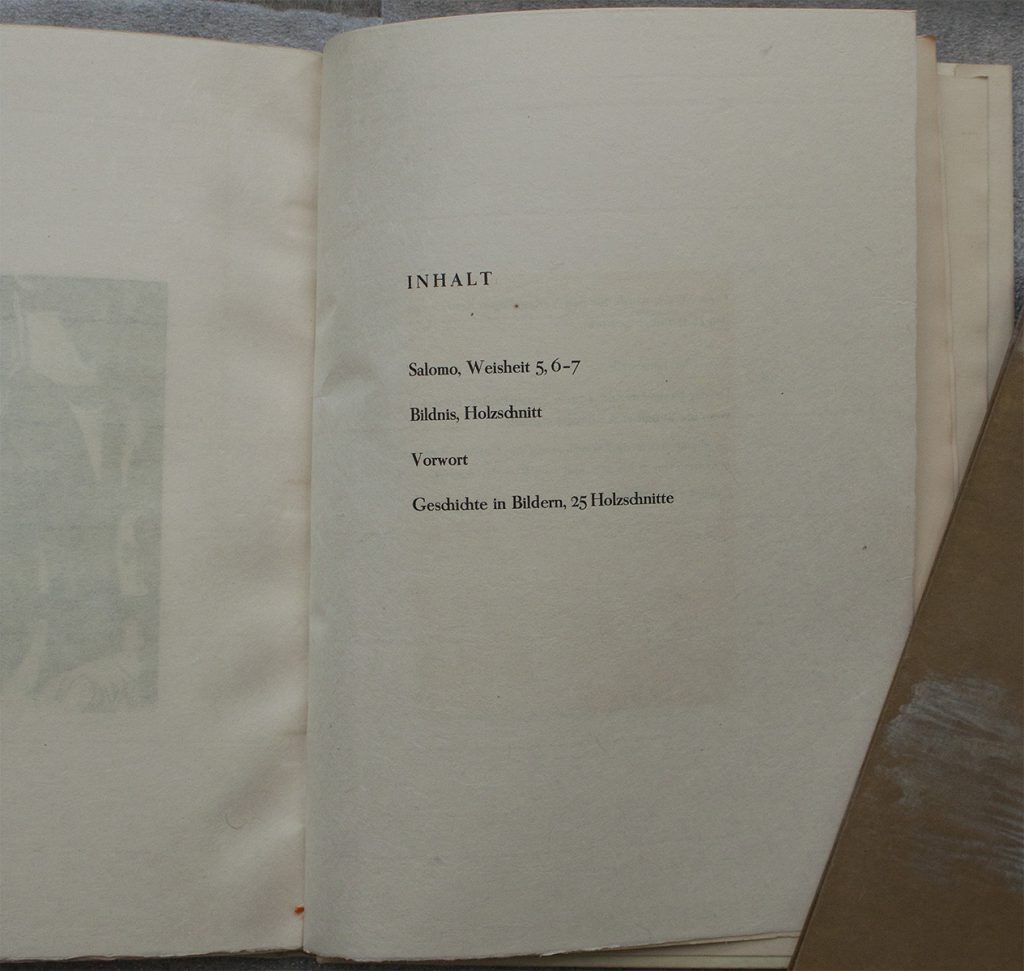

This work was printed from the woodcuts for the publishing house Eugen Rentsch.
It was produced:
Thirty copies on genuine Japan paper, numbered
from 1 to 30 and signed by the artist.
Two hundred and twenty copies on van Geldern laid paper,
numbered from 31 to 250, and signed by the artist.
gottlose 1929, # 31 to 250; details as above except:
- DJ is black with silver ink on front cover and spine
- cover is card in quarter ivory vellum with black printing on spine. Most of cover is in black but front cover has a block print face – the cover image is not part of the prints in the book
- book is slightly smaller than for #s 1-30 (28.1 cm H x 22.5 cm wide)
- prints are all about the same size (14.0 H x 10.5 cm wide ie same size as those for #1 to 30). All 250 copies apparently printed from the wood blocks
- end-papers are Geldern-Butten paper; the same paper as the rest of the book
- all three edges are uncut
- frontispiece – (a self-portrait) at the beginning but, unlike #s1-30, it is not signed.
- signed and numbered on the colophon
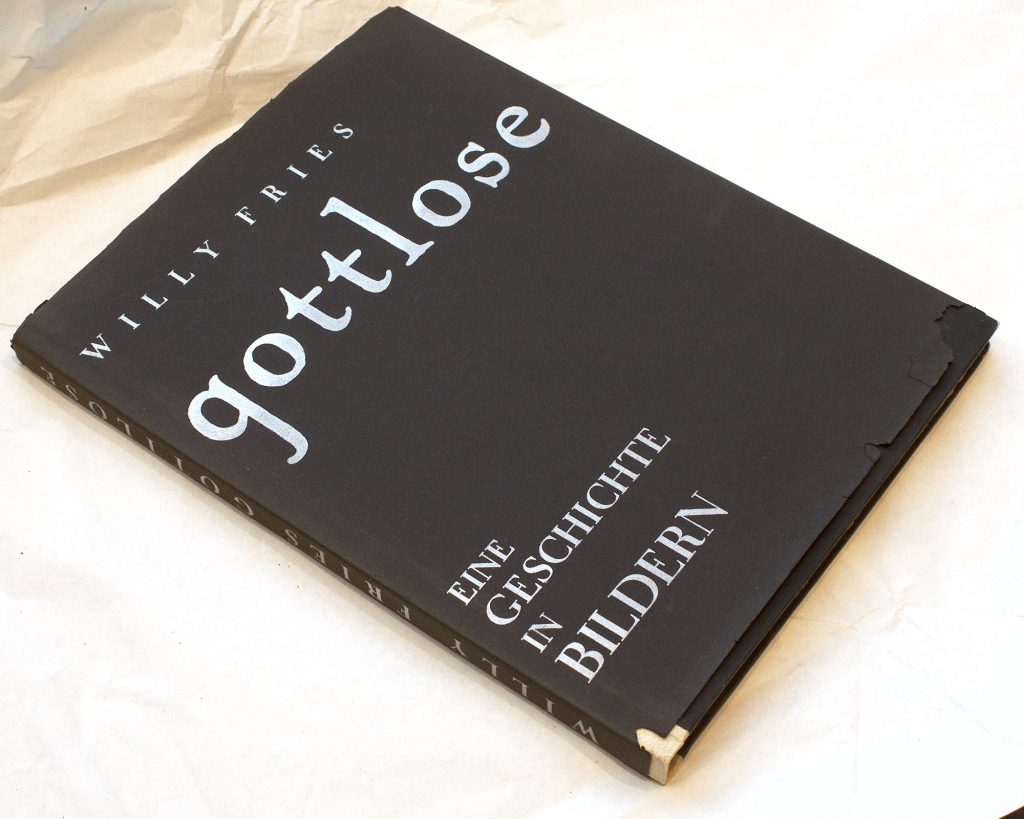
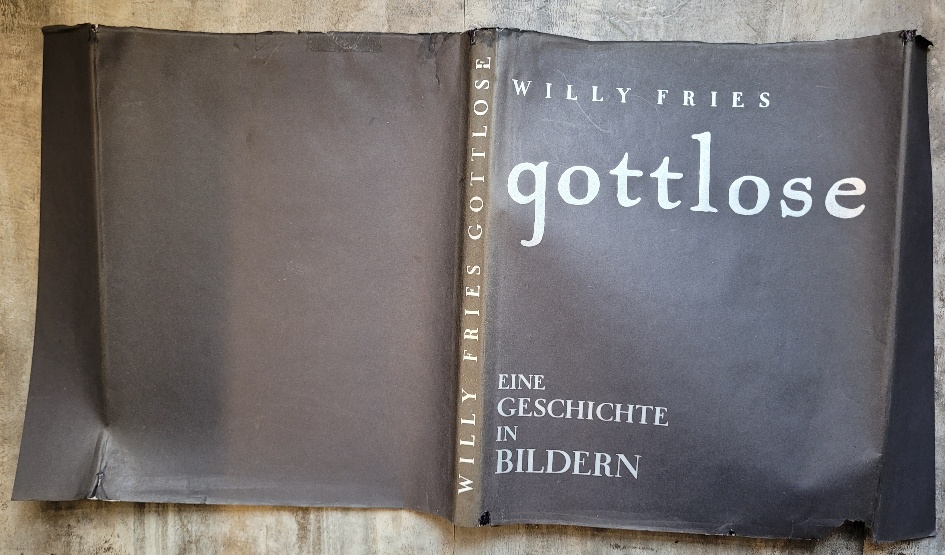
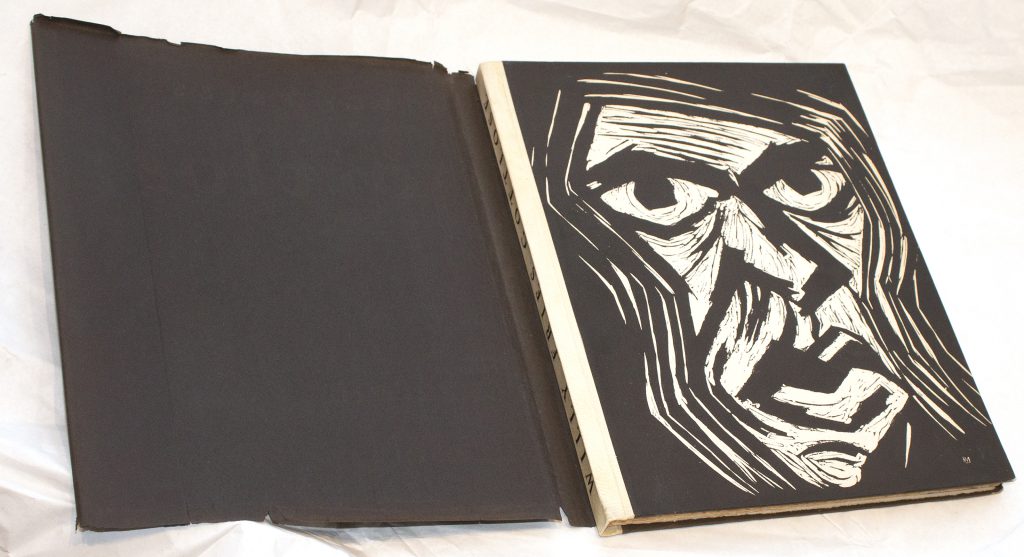
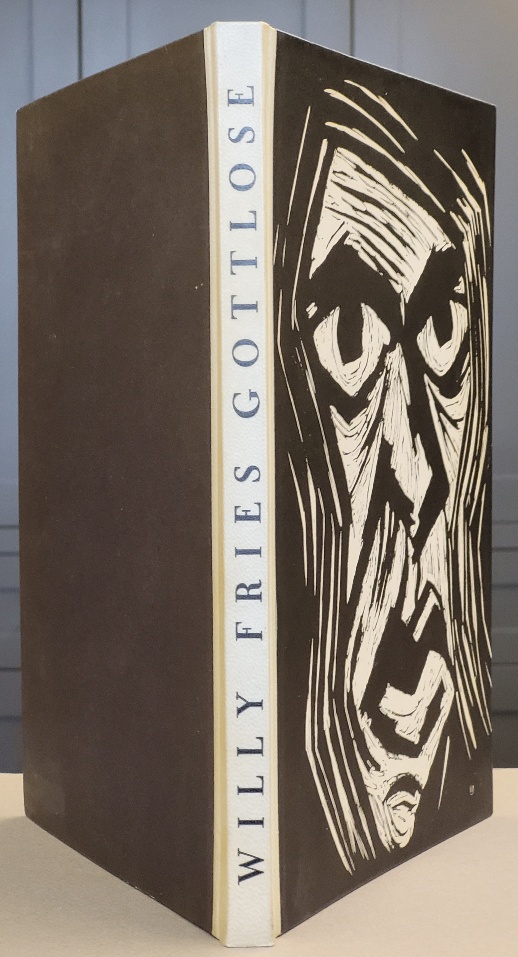
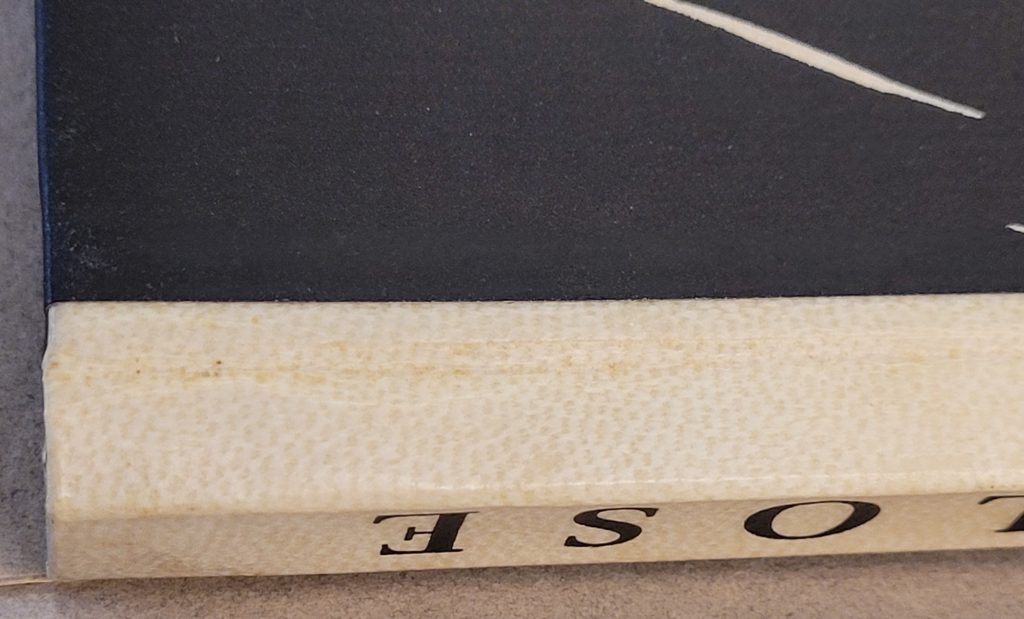
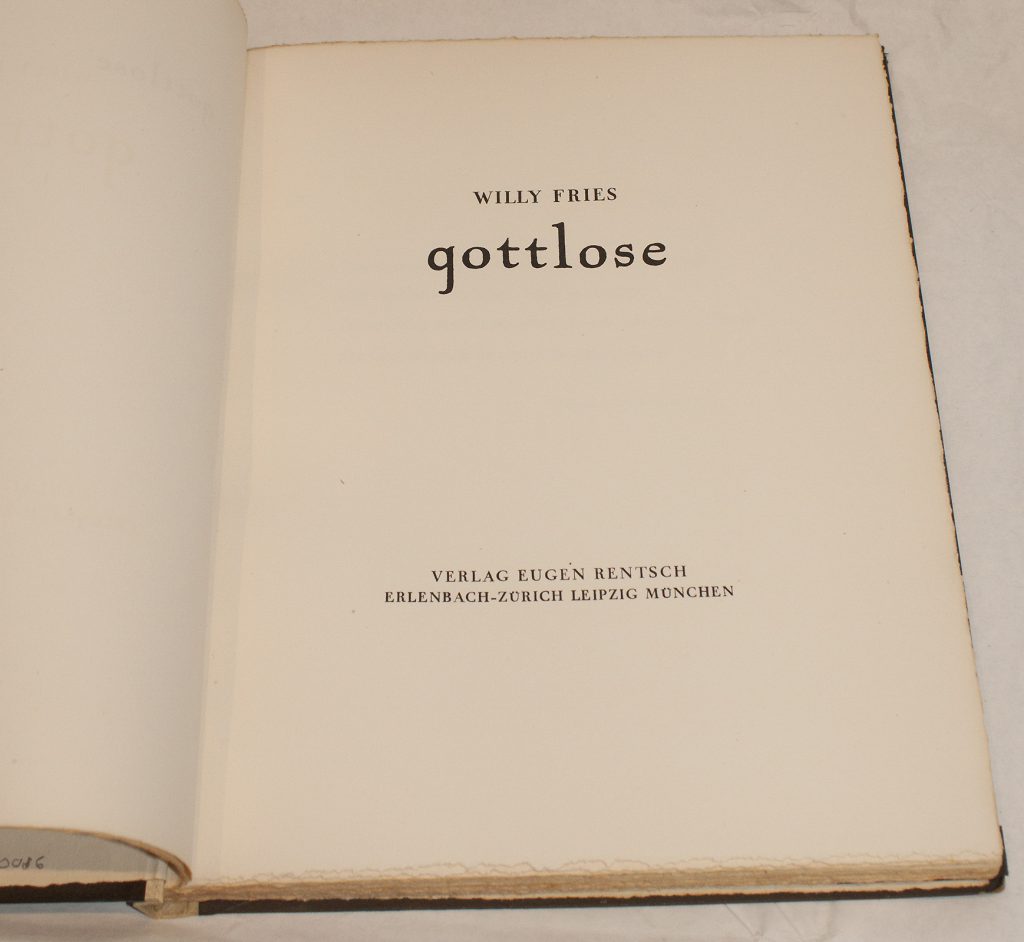
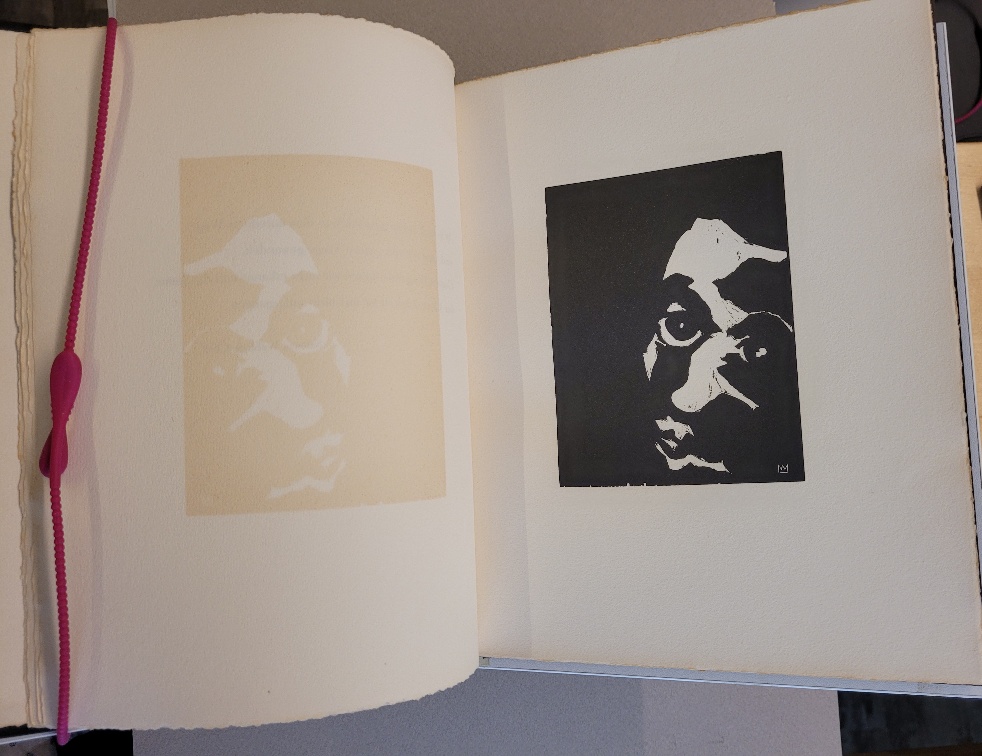
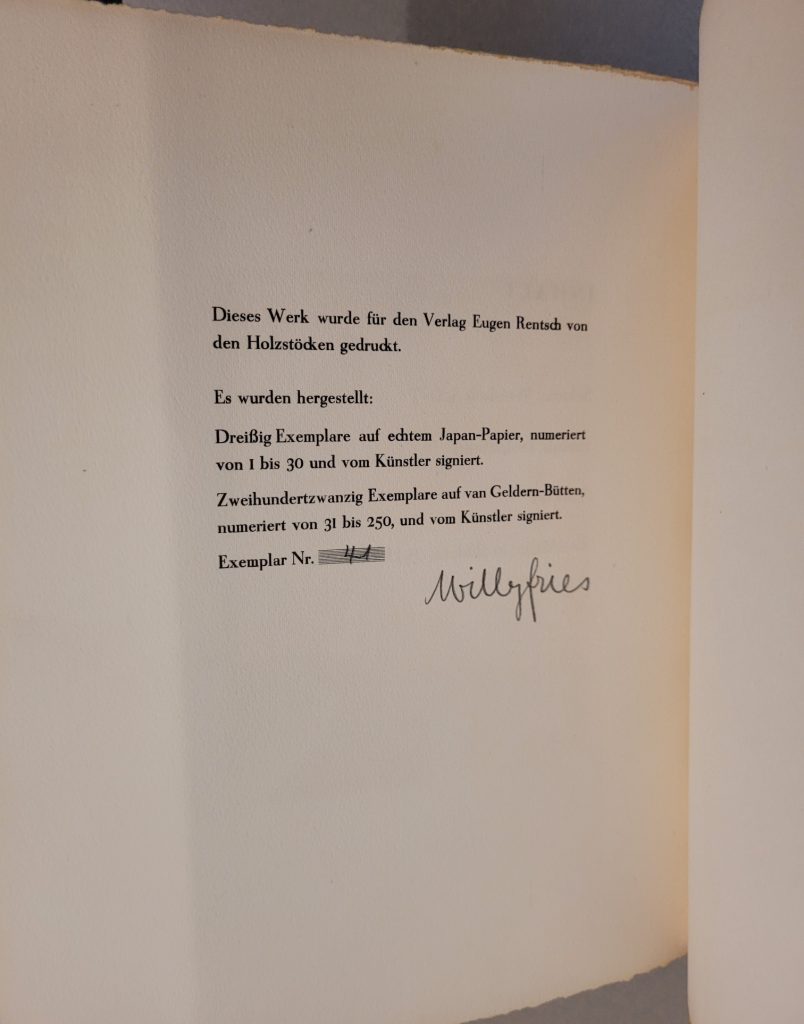
gottlose 1932 Trade Hardcover (die vorliegende Volksausgabe)
- Published by Verlag Eugen Rentsch Erlenbach-Zürich / Leipzig / München,
- Dated 1932
- Copyright: Verlag Eugen Rentsch, Erlenbach-Zürich
- edition size not stated
- unpaginated
- cover is 24.4 cm H x 18.9 cm wide – significantly smaller than other editions
- images are the same size as in the limited edition (eg image #9 is14.0 cm H x 10.4 cm W in all three cases) – colophon suggests they were printed from the blocks
- contents are the same as the limited editions except the colophon page at the back:
- not signed or numbered
- references the prior editions as well as the trade edition
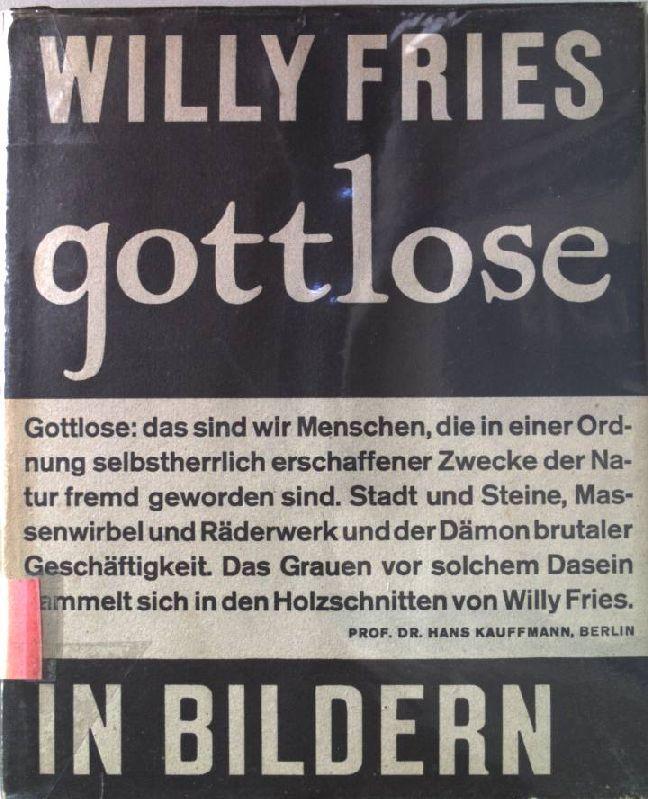
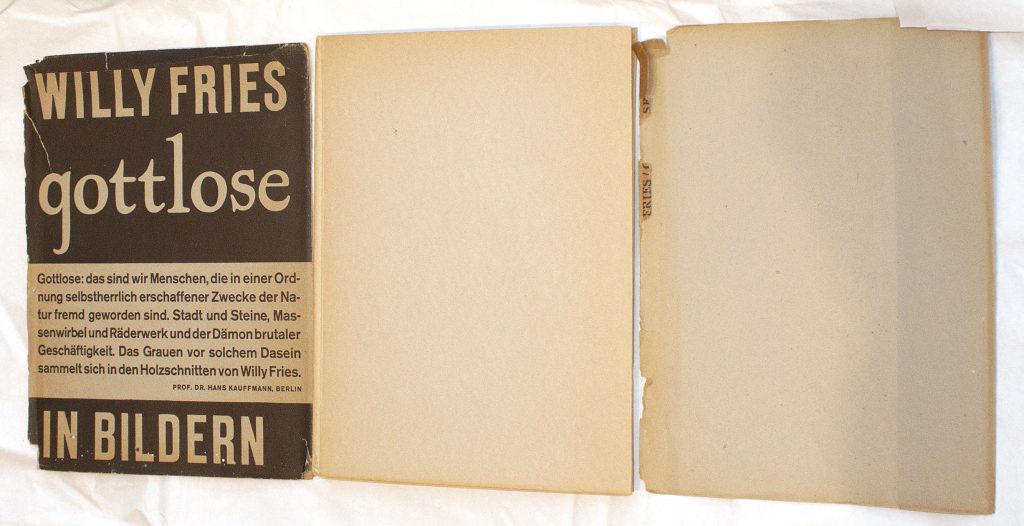
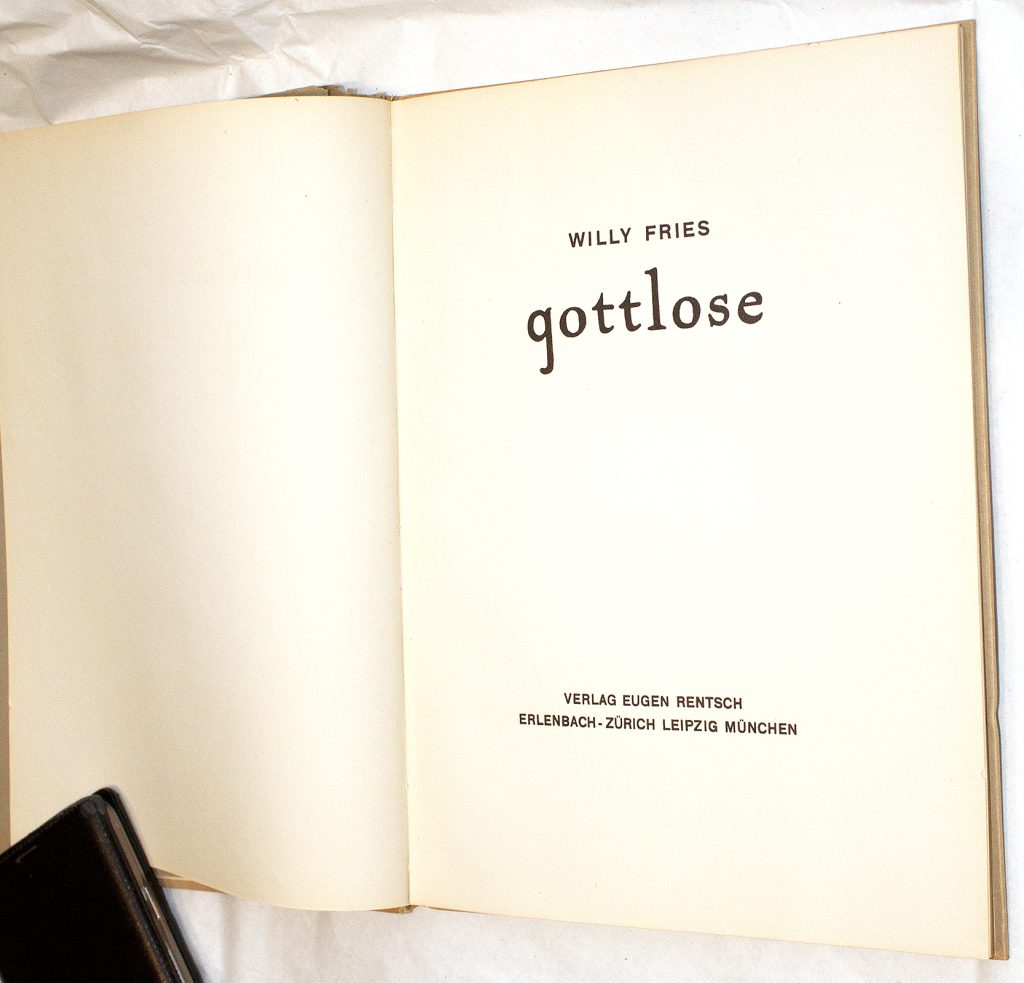
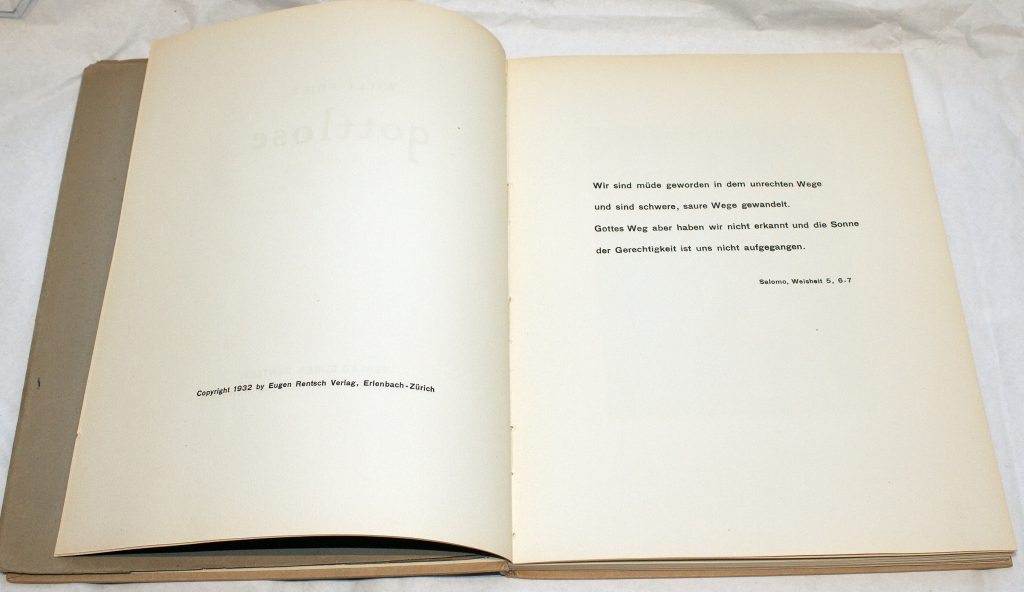
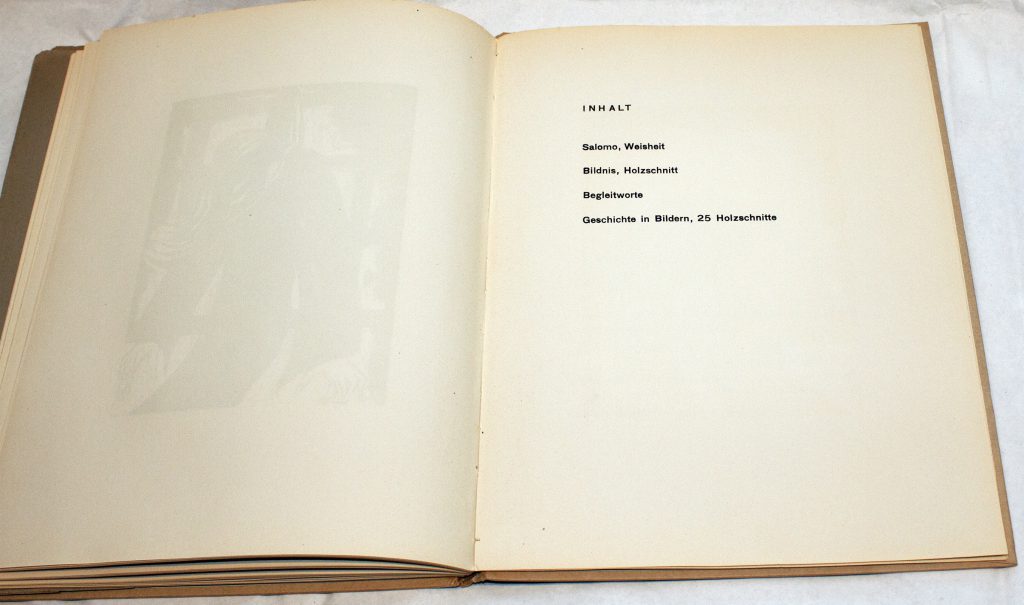
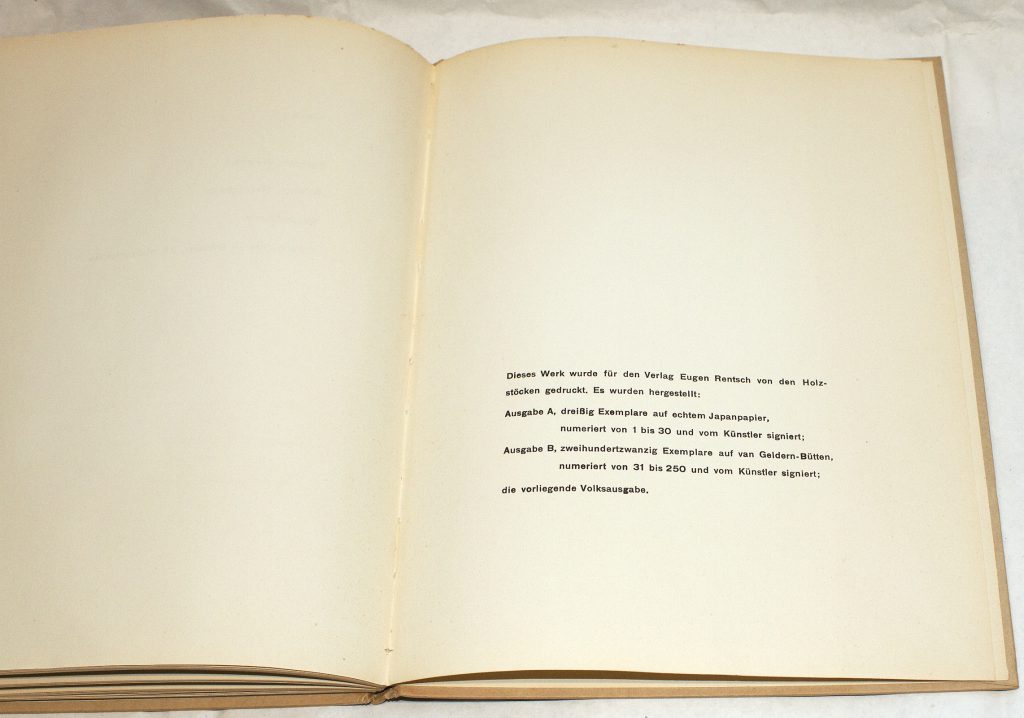
gottlose 1932 Trade Edition Softcover
I haven’t seen the soft cover but I assume it is essentially the same as the hardcover trade edition.
COMMENTS
If you disagree with something on this page, have an improvement, or have a comment please contact me
wn at wordlessnovels.com
Any information used will be given a credit line.